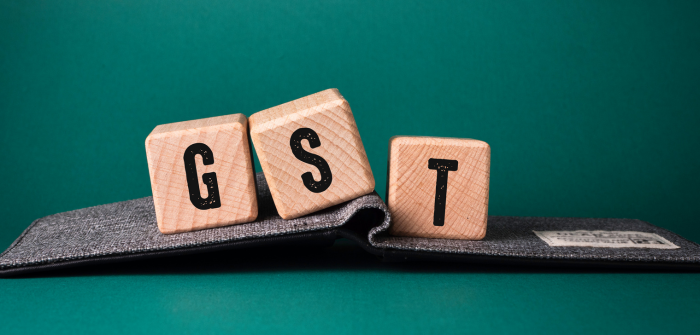
Capital goods constitute a significant aspect of business assets, involving substantial input tax credits. The Central Goods and Service Tax Act, 2017, outlines provisions for the supply of such capital goods. However, ambiguity and contradictions in the computation of taxes on these supplies have surfaced, raising concerns. This article delves into the nuances of this anomaly.
Defining Capital Goods:
As per Section 2(19) of the CGST Act, 2017, capital goods are goods whose value is capitalized in the books of account, used or intended to be used in the course or furtherance of business.
Three conditions must be satisfied: the presence of goods, capitalization in books, and usage in business.
Admissibility of Input Tax Credit on Capital Goods:
Under the CGST Act, 2017, 100% input tax credit is allowed at the time of purchase, subject to specific conditions. Conditions include satisfying general requirements under Section 16 and ensuring that capital goods are not used exclusively for exempt supplies.
Tax Implications on Supply of Capital Goods:
Section 18(6) of the CGST Act, 2017 treats the supply of capital goods on which input tax credit has been availed as a taxable supply. The tax payable is calculated based on the higher of reduced input tax credit or tax on the transaction value.
Analyzing Rule Discrepancies:
The reduced input tax credit is computed by applying different methods under Rule 40(2) and Rule 44(6) of the CGST Rules, 2017. These rules are applicable in different scenarios, but they may lead to different outcomes for the same transaction. Let us understand these rules and compare them with an illustration.
Rule 40(2): Quarterly Reduction Method:
This rule applies when a registered person supplies capital goods on which input tax credit has been availed before completion of five years from the date of invoice. The reduced input tax credit is calculated by reducing it by five percentage points for every quarter or part thereof from the date of invoice.
Advantages:
Disadvantages:
Rule 44(6): Monthly Pro-rata Method:
This rule applies when a registered person reverses or reduces input tax credit on capital goods due to any reason other than supply. The reduced input tax credit is calculated by multiplying it with a factor equal to five years (60 months) minus number of months for which capital goods were used by him.
Advantages:
Disadvantages:
Detailed Comparison:
To illustrate this anomaly, let us consider a simple example. Suppose a business purchases capital goods worth ₹10 lakhs on 1.3.2021 and avails input tax credit of ₹1.8 lakhs (assuming GST rate of 18%). The business uses these goods for 20 months and then sells them for ₹5.5 lakhs on 24.10.2022. How much input tax credit has to be reversed by the business at the time of sale?
According to section 18(6) of the CGST Act, 2017, the amount of input tax credit to be reversed shall be calculated in such manner as may be prescribed. The manner of calculation is prescribed in two different rules: Rule 40(2) and Rule 44(6) of the CGST Rules, 2017.
Rule 40(2) applies when capital goods are supplied as such by the registered person, i.e., without any further processing or modification. Rule 40(2) provides that the input tax credit attributable to the remaining useful life of such capital goods shall be computed on pro-rata basis, taking the useful life as five years (or sixty months). The formula for computing the reduced input tax credit under Rule 40(2) is as follows:
Reduced input tax credit = Input tax credit availed x (5 - number of quarters from the date of invoice) / 20
Applying this formula to our example, we get:
Reduced input tax credit = ₹1,80,000 x (5 - 8) / 20 = ₹1,08,000
Therefore, the business has to reverse an input tax credit of ₹1,08,000 and pay GST on ₹5.5 lakhs at the applicable rate.
Rule 44(6) applies when capital goods are supplied after being used by the registered person. Rule 44(6) provides that the input tax credit attributable to the remaining useful life of such capital goods shall be
computed on pro-rata basis, taking the useful life as prescribed for depreciation under section 32 of the Income Tax Act, 1961. The formula for computing the reduced input tax credit under Rule 44(6) is as follows:
Reduced input tax credit = Input tax credit availed x (remaining useful life in months / total useful life in months)
Applying this formula to our example, we get:
Reduced input tax credit = ₹1,80,000 x (40 / 60) = ₹1,20,000
Therefore, the business has to reverse an input tax credit of ₹1,20,000 and pay GST on ₹5.5 lakhs at the applicable rate.
It is evident from this example that there is a difference in the amount of input tax credit to be reversed under Rule 40(2) and Rule 44(6). This difference arises because Rule 40(2) considers only five years as the useful life of capital goods, irrespective of their actual useful life or depreciation rate. On the other hand, Rule 44(6) considers the actual useful life and depreciation rate of capital goods as per the Income Tax Act.
This difference in calculations under Rule 40(2) and Rule 44(6) highlights the existing anomaly in the computation of taxes on the supply of capital goods under GST. Businesses face uncertainty in choosing the appropriate rule for tax computation, impacting their financial planning and cash flow management. Moreover, there is a possibility of litigation and disputes arising from divergent interpretations and applications of these rules by taxpayers and tax authorities.
Clarity and uniformity in rule application are essential to ensure fair and consistent taxation and avoid unnecessary hassles for businesses. There is room for interpretation and an amendment favoring trade welfare could provide a solution to this anomaly. For instance, one possible solution could be to align Rule 40(2) with Rule 44(6) and adopt the same useful life and depreciation rate for capital goods as per the Income Tax Act. Alternatively, another possible solution could be to provide an option to taxpayers to choose either Rule 40(2) or Rule 44(6), whichever is more beneficial for them.
In conclusion, addressing this anomaly in the computation of taxes on the supply of capital goods under GST is crucial
© 2026 Business Consultant & Law Firm - Legacy Partners. All Rights Reserved.
Designed by Nuewelle Digital Solutions LLP

Legacy Partners
We typically reply in a few minutes